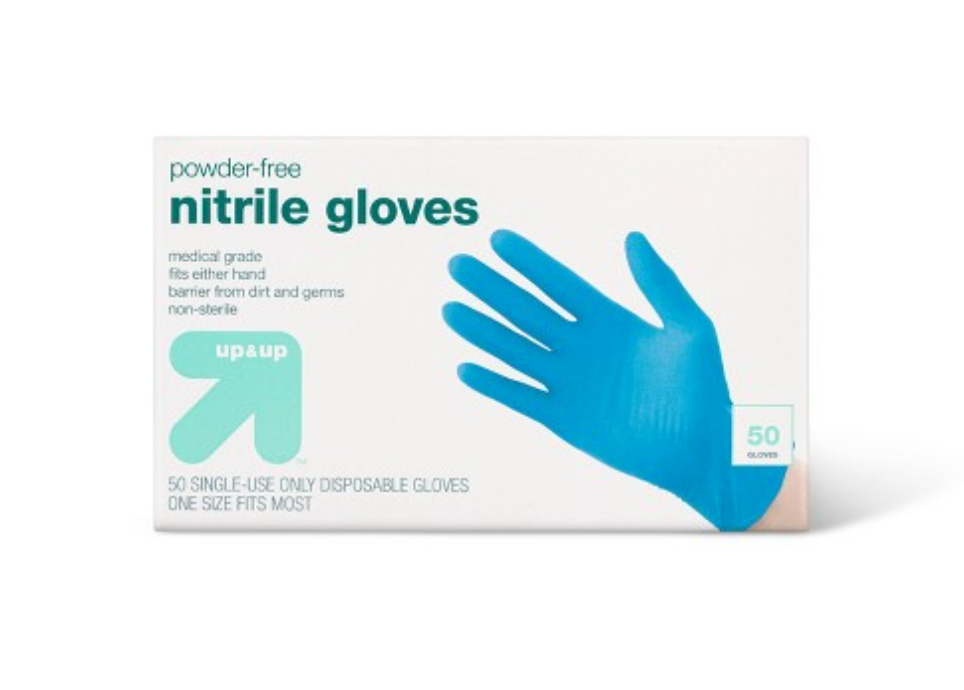- Your cart is empty
- Continue Shopping
Nitrile Gloves for sale

Nitrile gloves are laboratory gloves that are made out of nitrile. Nitrile is a synthetic rubber alternative to latex, which is derived from the sap of the rubber tree. Nitrile comes in various thicknesses, ranging from 1mm to 5mm, with thicker options offering more protection when working with hazardous materials.
Nitrile gloves provide excellent grip and general protection against the negative effects of chemicals, such as:
Nitrile gloves are generally easy to clean and disinfect, so they can be used in areas where there is a possibility of contamination. Most nitrile gloves can be worn for 24 hours before needing to be disposed of. However, many nitrile gloves will still need to be disposed of after just a few hours.
Different Nitrile Types
There are three main types of nitrile alloys – Type A, B, and C. Types A and B are 50% nitrile, while type C is 100% nitrile. Nitrile gloves to this day are still available in 1mm, 2mm, and 3mm thicknesses. Nitrile gloves can also be purchased in different colors, such as black, grey, white, and purple. There are many different colors of gloves available to choose from.
Most nitrile gloves are made out of type A, which is 50% nitrile, however, there are also 100% nitrile gloves that are made out of type C. The higher percentage of nitrile in the glove makes the glove stronger but causes the gloves to break down quicker. Type A gloves will break down quicker than type B or C gloves.
Nitrile Gloves vs Latex Gloves
Nitrile gloves offer more chemical resistance than latex.
10 Reasons to buy Nitrile Gloves
1.) Wear for 24 hours before they need to be thrown away
2.) Easy to use and take off
3.) Very comfortable and light
4.) Durable and long-lasting
5.) Provide excellent grip
6.) Non-staining and odorless
7.) Chemically resistant
- Low-cost
9.) Ambidextrous availability
10.) Low maintenance and easy to clean
Nitrile gloves are one of the fastest-growing glove styles being used today. Nitrile gloves can be purchased in many different laboratory supply stores, as well as online. They are available in 1mm, 2mm, and 3mm thicknesses. Nitrile gloves offer excellent grip and general protection against the negative effects of chemicals.
The first Nitrile Gloves were first introduced into the market by the American Nitrile Company.
Nitrile gloves are also known as neoprene gloves, Vinylon, Nivlar, Neosilk, Neoprene, Nitrilen, Kalrez, and Plexiglas.
Nitrile is a synthetic rubber alternative to latex which is derived from the sap of the rubber tree.
Nitrile is stronger than latex and provides better protection against hazardous chemicals. It does not melt, as latex does.
There is no natural rubber latex in nitrile gloves providing a safer glove choice for people allergic to natural rubber latex.
Commonly used in medical applications, research labs, or any application where a silicone glove would be appropriate, the nitrile gloves provide greater chemical resistance to a wide range of chemicals including acids and bases.
Nitrile gloves are manufactured from the polymer polyisoprene rubber, which is derived from natural rubber latex, making it similar in feel and size to normal latex. Nitrile is more pliable than normal latex and it is also less porous than natural rubber.
Nitrile can be recognized by its semi-transparent characteristics. Nitrile gloves are commonly used in the medical industry for sensitive procedures.
Nitrile gloves are also used in industries that require a glove with superior chemical resistance, such as the foodservice industry where nitrile gloves are used to prevent cross-contamination of food items.
Nitrile gloves are used in the food industry versus latex gloves because of their superior resistance to oil, greases, and solvents.
Nitrile gloves are also used in the chemical industry due to their superior resistance to acids and bases.
Since nitrile gloves are made out of synthetic rubber, they do not provide any protection against cuts (sharp objects) or punctures (needles). Nitrile gloves do not provide any protection against extreme heat or cold.
Nitrile gloves are not as flexible as latex, which can make them more difficult to put on and take off.
Nitrile gloves are more expensive than natural rubber latex, however, they provide a longer lifespan and a longer protection time. They also provide better chemical resistance compared to natural rubber latex. Natural rubber latex is a natural product, however, it is a common misconception that natural rubber latex can cause allergic reactions.
Nitrile glove manufacturers have been working on creating a nitrile glove that is more flexible and easier to put on and take off. The gloves that are currently being manufactured today are just as easy to use as latex gloves, with improved chemical resistance.
Nitrile gloves are made in thicknesses ranging from 1mm to 5mm with thicker options offering more protection when working with hazardous materials.
Heat is the leading cause of failure in disposable gloves. Most nitrile products have a maximum operating temperature of 149°F (65°C). Working at higher temperatures for extended periods can cause gloves to burst or break apart. Nitrile is a superior material to use in applications where the risk of explosion or release of toxic vapors is present.
Since nitrile products are compatible with most cleaning and disinfecting solutions, they’re commonly used in medical, foodservice and pharmaceutical industries where cleanliness and purity are essential.
Nitrile gloves are ideal for use in a variety of situations, including:
• Heavy-duty applications that require a strong glove protection
• High-temperature work environments, such as found in welding and hot rolling operations
• Chemical reaction and reaction heating to occur between chemicals and materials
• Processes where protective gas may be required or where there is a possibility of explosion or release of toxic vapors
Nitrile gloves are recommended for use with several types of chemicals.
Harmful chemicals should only be handled with the use of protective gloves to prevent skin contact.

